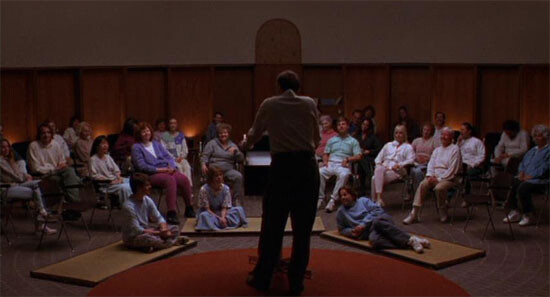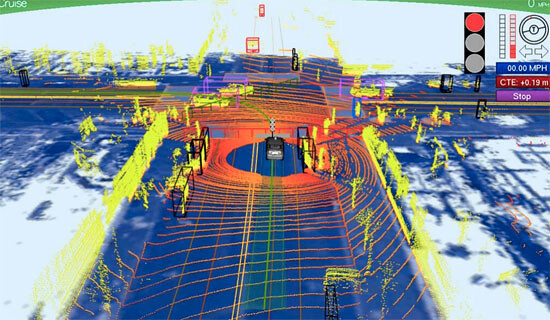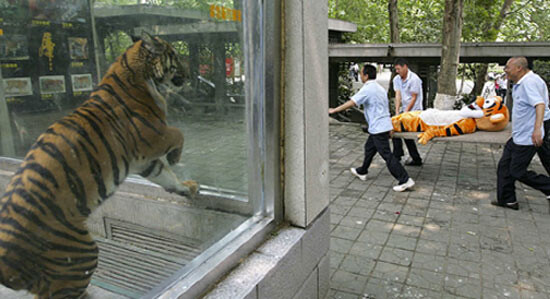1. Frame
Any conjunction between aesthetics and politics (for a political aesthetic, an aestheticized politics, a geopolitical aesthetic, a politics of aesthetics, and so forth) is necessarily fraught by estranged agendas—all the more reason for us to conceive of their inter-activation from a willfully ahumanist perspective. Aesthetics and/or politics of what and for what? The cascade of Anthrocidal traumas—from Copernicus and Darwin, to postcolonial and ecological inversions, to transphylum neuroscience and synthetic genomics, from nanorobotics to queer AI—pulverize figure and ground relations between doxic political traditions and aesthetic discourses. Before any local corpus (the biological body, formal economics, military state, legal corporation, geographic nation, scientific accounting, sculptural debris, or immanent theology) can conserve and appreciate its self-image within the boundaries of its preferred reflection, already its Vitruvian conceits of diagrammatic idealization, historical agency, radiating concentric waves of embodiment, instrumental prostheticization, and manifest cognition are, each in sequence, unwoven by the radically asymmetrical indifferences of plastic matter across unthinkable scales, both temporal and spatial. But while the received brief for political aesthetics is denuded, abnormal assignments proliferate.
This avenue toward post-humanism is a reckoning with planetarity and its incompleteness.1 Geophilosophy, by one path, ambles from a Ptolemaic yolk nested within protective layers of crystalline spheres; to Kantian Geography, for which the commonality of the earth’s crusty surface guarantees Cosmopolitanism; to Deleuzian and Schellengian solutions of the painterly image-force; to numinous or occult conspiracies of geologic violence; and now to a comparative planetology for which the earth as a mediating polis can only be thought through aesthetics derived from, not imposed upon, the computation of possible geometries, subdivisions, doubles, inversions, localizations, and Hubble-scale adoptions from the outside.2 This latter project entails an acceleration from the initial recognition of local planetary economics toward a more universal recombinancy for which the political and aesthetic representations of human experience are tilted off-center. From that outside looking back in, the generative alienations brought about by potential xenopolitics, xenoaesthetics, xenoarchitectonics, xenotechnics, and so on, turn back upon the now inside-out geopolitical aesthetic for which the relevance of human polities (human art, human experience) seems weird and conditional.3 How might we grope toward an inventory of these contingencies? What index of effects would allow us to read this situation even as it is unresolved and perhaps unresolvable for us? To transform our own relations to these displacements, what could do the work for a geopolitical aesthetics by and for a nearly extinct Anthropocenic subject, even and because it refuses the phobic bigotries of “political aesthetics?” If the term “accelerationist” can refer to a reckoning with that post-Anthropocenic exteriority and its extant available clues, more than to the dromologic velocity of our auto-programmatic tiny machines, then is this an accelerationist geopolitical aesthetic, and if so, then toward what rich absences?
This short essay climbs into a tiny nook within these larger questions, and so instead of making global claims regarding the ontology of these contingencies, or about their relative significance for philosophy, or political claims about their uncomfortable potential homologies with the alphanumerics of Algorithmic Capitalism, it instead suggests an incomplete roster of local traces and degraded effects of that geopolitical aesthetic already in our midst. I am particularly interested in how these effects interface with what replaces the emptied legacy positions of “Polity” and “Aesthetics” directly through confrontation with what we can broadly call Design. In particular, we are attentive to how planetary-scale computation’s instrumentalization of Design to model its political arrivals also provides “aesthetic” programs which are less reflective of political realities than generative of their material evolution. For this, the work of computation as a style of thought, while today overdetermined by its economic instrumentality, is held open by the final incompleteness of algorithmic indeterminacy, and through this can directly engender unknown and unknowable political architectures.


2.
But first we compare this accounting of trace-effects, as seen through the restricted pixelated prisms of Design and Computation, to what Steven Shaviro calls an “accelerationist aesthetics,” especially as strongly differentiated by him from an accelerationist politics.4 For Shaviro, the value of an accelerationist aesthetics is to draw out “what it feels like” to live in the contemporary moment, as partially determined by inhuman displacements like those noted above. Accelerationist aesthetics accomplishes this conjuring prototypes of what comes after the inevitable Anthropocenic crashes, so that we might envision and evaluate our adaptations in advance. Rather than blithely offering pap “design innovations” with which we might spend our way past death, this indulgence in imagining without reserve the world-without-us-to-come presumes huge sums of general catastrophe and stares straight down the rabbit hole. For this, Thanatos isn’t a diagnosis. It is simply a site condition. However, for Shaviro this becomes an exercise in cognitive mapping that may provide “the individual subject with some heightened sense of place.”5 We will take strong exception to this last recommendation. The way one reads Shaviro’s abridgment, for him an accelerationist politics comes with no discernible, coherent plan for the amelioration of eco-economic entropy hear and now, no clear path out, nor even a dialectical guarantee of ultimate outcomes. It is therefore disqualified as a suitable program for apparently well-understood “political” goals. The corollary aesthetic project, however, contains a useful pedagogical spark that could, at some distance, train and redeem a recognizable politics through the shock of its unrecognizable affect. My interest is exactly the opposite: an unrecognizable politics through a recognizable aesthetics, by drawing collapses, not distinctions, between the two. Foremost because this is to make it utterly impossible to map the situation through anything like the self-regard of an “individual subject.” That is first to go, but apparently not the last to leave.
3.
To predict (and prototype) what will and will not survive the Anthropocene demands that artist/designer speculate upon irreducibly complex material interdependencies (of oil, water, nitrogen, oxygen, silicon, avian influenza, rotting iron, insect biomass, plankton genomics, and so forth), as well as speculate upon the effects that the subtraction or amplification of any one of these will have on the others. These things are impossible to really know (and yet nothing deserves more attention) and so anything like a “geopolitical aesthetic” in the Jamesonian sense (a cinematic mechanism, however conspiratorial, for the comprehension of a World System and its waves of control) is necessarily an exercise in apophenia, in drawing connections and conclusions from sources with no direct connection other than their indissoluble perceptual simultaneity. This apophenia, a seeing of patterns where there is actually only noise, is neither a failure of imagination nor a virtue, but rather an unavoidable qualification of our predicament and its (only partially decipherable) aftermath. There cannot be a post-Anthropocenic “politics” in any recognizable, normative sense—a “politics” predicated on the self-regard of the human subject mapping himself as a coherent agent within a stable historical unfolding. It’s just not possible to distinguish between what is an existential risk and what is an absolute invention, and what is both at once, and mobilize “positions” accordingly. So mobilization must go on without that distinction. To govern—that is, to account for the general economy of decay and creation with some nominal degree of authorship—something else is required.
We are brought to this Anthropocenic precipice not just by a cosmic predicament but by the tempestuous, ambivalent violences of Capitalism, particularly our current Algorithmic Capitalism. But do we contain it, or it us? This economics is, on the one hand, the megamachine of incredible anthropocentric composition and consumption, and on the other, the appropriation of planetary matter, including human flesh, without concern for politics or limit, by an “intelligence from the future.”6 Capitalism is seen at one and the same time as a compulsive eco-economics linked inextricably to our omnivore dominance, and/or an alien entropy machine for the processing of terrestrial material, value, and information into absolute speed, peeling back the husk of human markets so as to finally suck dry the complicit mammalian diagram. To eat or to be eaten? But this reversibility of insides and outsides is perhaps exactly why it is necessary to retrain the work of the “political” away from a direct confrontation with or acceleration of Capitalism as the scope of the problem as such, and instead towards a direct engagement-in-advance with what succeeds and exceeds it.
Instead of “post-Capitalism” as the futural specter on call, I prefer the more encompassing “post-Anthropocene.”7 The latter names not only another eco-economic order but articulates in advance the displacement of the human agent from the subjective center of its operations. It measures its situation from picoseconds to geologic temporal scopes, and nanometric to comparative-planetary scales, and back again. It does not name in advance, as some precondition for its mobilization today, all the terms with which it will eventually have at its disposal in the future. The aporia of the post-Anthropocene is not answered by the provocation of its naming, and this is its strength over alternatives that identify too soon what exactly must be gained or lost by our passage off the ledge. The post-Anthropocene indicates that the organizing work of a “xenogeopolitical aesthetics” (or whatever) can be done only in relation to a mature alienation from human history and anthropocentric time and scale. As it foreshadows and foregrounds the eclipse and extinction of Anthropocenic anthropology and corresponding models of governance, it establishes not only that humanism disappears with humans, and vice versa, but that the more elemental genetic machines with which we now co-embody flesh can and will, in time, re-appear and express themselves as unthinkable new animal machines, and with them, New Earths. The apophenia is never resolved for us after all.


4.
Perhaps the most critical gambit for any Accelerationist geopolitical aesthetic is its simultaneous location within evolutionary disappearance and appearance, in conservation and expression and as reciprocal outcomes (including also extinction). Consider the “arche-fossil,” presented by Quentin Meillassoux as an evidentiary demonstration of a basic encounter between the abyssal reality of ancestrality and the universal dislocation of thought from worlding, even the worlds of fossilized primordia which it can, eventually, contemplate through a confrontation with such geochemical stains. For the post-Anthropocene, and our contingent disorientations (apophenias, aesthetics, designs) we must pivot and rotate that arche-fossil’s temporal trajectory from one of ancestrality toward one of alien descendence. Just as we are forced to see in the fossil the contingency of a world that precedes thought, we are also forced to encounter in advance—as a measure of the present condition—the descendent for which we are the ancestor and for which we are the unthinkable fossil. Unlike the real fossil, that descendant cannot be held in hand, even as its chemistry storms within us and around us. Our presence is but an anterior precondition for our future dissolution, and for the appearance of another unthinkable phylum, on-planet or off-planet, for which our thought and trace will be as alien, inaccessible, and horrifying in its indifference as the Cenozoic fossil is to us now.
Thanatos, the organism’s compulsive drive toward dissolution back into the world, is not the most critical economy for accelerationism, as the passage from organic into inorganic is just as easily inverted and extinguishment may be overtaken by emergence.8 At work is not then instead Eros, the conservation and reproduction of the organism, but on the contrary, an open-ended scanning of possibilities through which the silhouette of the organism is to be cast off like dead skin so that something irregular might arrive from within and without at once, over and over again, until through genetic and allogenetic iteration, the vestigial trace of the human ancestor is absorbed. While the work of organismic evolution may be to find ever more circuitous paths toward death (and of Capitalism to trace ever more winding paths to collapse), the work of the expanded phylogenome is a more open-ended convolution toward adaptation, invention, diversion, and reiteration. The perspective offered on our contemporary moment by this ancestral retrospection-in-advance challenges the conceit that, should Anthropocenic ecological collapse make familiar human systems untenable, then the chemical and genetic projects localized in our phylum, biomass, and phenotype will have no reality. They may. They may not. Either way, the best of all possible news is that, should “we” survive the Anthropocene, it will not be as “humans.” To the extent that the arcs of this slow displacement can be drawn, felt or modeled, then a post-Anthropocenic geopolitical aesthetics has meaning. Otherwise it has, none.


5. Inventory
From musings on the interests of species and phylum during transitions to and from geologic eras, I will now careen back to our very local and specific involvement with certain trace-effects that might be read as constitutive indicators of some cleavage between the Anthropocene and the post-Anthropocene. It’s possible as well that these may prove instead to be just fleeting tendencies, perhaps symbolic of something more important, but which are themselves only novelties. I can’t say. Mine is not a roster of mission-critical assets, not even a beginning of a real summary, but merely a sample inventory that may prove to have special significance. If a link is possible between these and a “politics” interested in acceleration toward a post-Anthropocenic condition, it is because the biopolitical context of our Algorithmic Capitalism is itself, for better and worse, already a strong leverage point in the larger dramas of planetary-scale conversion, decay, restoration, and wholesale replacement. Inadvertent geoengineering during the Anthropocenic era has involved us in ecologic gambling beyond our means, and so, a strong distinction between an accelerationist aesthetics versus politics is likely not very beneficial. This is not because aesthetics serves as some master vehicle of encounter with the distribution of sensibility, participation, and truth-telling about lifeworlds, but because (like the weirdly ahumanist traces below) they are forms of design and designation that qualify the affect of our post-Anthropocenic precipice by constituting it, rather than reflecting, suggesting, mirroring, or metaphorizing it for us through some public congress. It is less important that they dramatize something dangerous about the world we will face than that they physically incorporate and modify that world in advance without our supervision, oversight or guidance.
For example, while the critical path of the Thanotonic economy traces living organisms back into inorganic matter by a deep momentum toward ultimate reabsorption with the dead ocean, in the early-to-mid Anthropocene the track from organic life back into inorganic matter has multiplied, inverted, and de-differentiated. One not only transforms into the other, but each is displaced by the other as a complementary form of embodiment: robotics, molecular engineering, synthetic biology, various implants, tissue and organ transplantation, sensory augmentation, avant-garde pharmaceuticals, and so forth. For some this designed promiscuity between the organic and inorganic at the scale of the organism may be a kind of living death. The species can’t wait to die and be reabsorbed by the inorganic, and so the individual organism takes these actions preemptively upon itself. By mixing organic and inorganic material into new composites in the laboratory, it introduces death into life. On the other hand, these technological displacements of life and matter may signal something more than diverted necromancy (or generalized necrotizing fasciitis at industrial scale) they may signal a desire to innovate upon the mammalian diagram, perhaps in the accidental interests of a biopolitics—far more eccentricly than its participants realize. However, at the same time, these disciplines of machine intelligence may, in practice if not in theory, close off rather than open up the wider project of warm alien distortion, as these initiatives are couched within rhetorics and institutions of medical progress. Nevertheless, below are just a few trace-effects that might suggest both perspectives at once. These are a few of my favorite things.


6.
Epidermal Biopolitics and Nanoskin. We have a good sense of the passage from the Foucauldian disciplinary biopolitics for which bodies are captured, enveloped, individuated, nominated, and enumerated into a governable interior, into the Deleuzian “society of control” for which open fields of interfaces, switches, and gateways quantify the traces and trails of partial subjects in motion as they pace through urban landscapes, wandering without tether because there is no outside to which they might escape. Now another regime appears, one that organizes its biopolitical governance through a more immediate and affective means: the sensing and codification of risk at the level of skin (a mammal’s largest sensory organ, a cell’s essential structural support, a planet’s most exposed inventory of life). This epidermal biopolitics is based less on “seeing like a state” than upon what a governing apparatus can sense. That sensing may work toward the comprehensive quantification of carbon, CO2, particulate matter, or heat, as it does for the network of satellite and terrestrial sensors that comprise the proposed Planetary Skin infrastructure as pioneered by Cisco and NASA.9 Here, ecopolitics and global governance bypass the securitization of human populations in favor of the ubiquitous sensing and analysis of molecules of interest and their residual patterns.
Elsewhere, police action is focused on thermodynamic human skin, as demonstrated by the chase for Suspect #2 after the Boston Marathon bombings, he was discovered by heat-seeking technologies that disclosed his warm animal profile hidden beneath layers of urban fabric. For all of us, intercity movement by airplane requires that we submit our own skin, and the surfaces of our possessions, to the guaranteeing scan that can prove that they bear no telltale dust of dangerous chemicals and compounds. We have our person observed by full-body scanners which unconceal the mobile subject from his outer clothing (not nude, but ultranude). To explore this (with due perversity), my Center for Design and Geopolitics worked in collaboration with the Laboratory for Bionanoengineering (both at the University of California, San Diego) to develop applications for inks (and in this case, a wall paint) that could detect ambient particulate trace elements of chemicals commonly used in improvised explosive devices. With microelectronics embedded in the paint itself, the interior building skin becomes a sensor technology, no longer furtive like the panoptic gaze but now fully disclosed as an ambient technology coating the outer skin of the habitat itself. Epidermal biopolitics suggests a strong interweaving of organic and inorganic bodies according to strategies of risk mitigation, but also unforeseeable modes of communication between unlike bodies which can extend, modify, and prostheticize their most all-encompassing sensory media (epidermal sensation) in ways that were until now only possible for vision and audition.
Cloud Polis. Drawing lines upon a planet, either by the physical inscription of walls and envelopes or by the virtual geometries of massless legal borders, is essential to anthropic politics. (Think Carl Schmitt’s The Nomos of the Earth), and the multiplication and confusion of these drawings by planetary-scale computational architectures puts into play jurisdictional designations and subdivisions, or the refusal of same, and points toward unfamiliar models of geopolitical design and designation.10 We see how global Cloud computing platforms can delaminate normative Westphalian political geography and introduce another, asymptotic sovereign layer on top of the State’s territories. This is seen perhaps most directly in the ongoing Sino-Google conflicts, that began in 2008. As States become Cloud-based entities, conversely Cloud platforms take on some of the most essential technologies of governance, like legal identity, currency, cartography, and platform allegiance. The Cloud Polis suggests weird, thickened, plural geographies and non-contiguous jurisdictions, mixing aspects of US superjurisdiction over both Cloud (Pirate Bay, Megaupload) and State space (customs screening in overseas airports, extraordinary rendition) with aspects of the Charter Cities which would carve new partially privatized polities from the whole cloth of de-sovereign lands.
The Cloud Polis extracts revenue from the cognitive capital of its user-citizens, who trade attention and microeconomic compliance for global infrastructural services. It provides each of them with a discrete online identity and a license to use that infrastructure (not unlike hukou licenses in China that dictate who may and who may not formally partake of urban systems). These embryonic accomplishments of planetary-scale computation comprehensively incorporate information across multiple scales, as well as redraw political territory in its own image point toward an increasing universal acceleration, centralization, and recombination of material flows than those of pedestrian neoliberalism (and conceivably not so dissimilar from the past dreams of communist cyberneticians.)11 In time, perhaps at the eclipse of the Anthropocene, the historical phase of “Google Gosplan” gives way to State-less platforms for multiple strata of synthetic intelligence and networks of outlandish biocommunication to settle into new continents of cyborg symbiosis. Or perhaps instead, if nothing else, the carbon and energy appetite of this embryonic ecology will starve its host before it can fully gestate.
Machinic Images. Any discussion of an accelerationist geopolitical aesthetic must account for the contemporary technologies of the image itself. Taking the long view, we see that humans’ externalized expression of visual ideas dates at least to the primordial architectures of the cave wall. Much later, it passed through a relatively short painting-photo-cinematic phase (lasting a few centuries, give or take) for which individual images and image-sequences were produced, distributed, and appreciated as rare artifactual events. Now and for the foreseeable future, images are a sub-genre of machines. Like the images on paper money, which appear as they do in order to best support specific counterfeit-prevention technologies designed into the patterns, some images (such as my explosives-sensing image noted above) have a discrete technical capacity that is inextricable from their materiality as images. Everyday data visualization turns the diagrammatic image into a scientific, managerial, and military instrument, while pervasive GUIs (graphical user interfaces) turn similar diagrams into active, goal-directed tools that mediate between a human folk psychology of action and algorithms available in the user’s environment. Beyond this, GUIs also train thought toward certain regimes of interpretation of that environment, and as GUIs become more closely glued to direct perception (as for augmented reality), their capacity to engender strong theological interpretations for their users will prove irresistible to various fundamentalisms. In this, the machinic image is punctured by little sinkholes between the symbolic, the imaginary, and the real.
On a global scale, the machinic quality of the image is also partially a function of machinic quantity. With the comparatively instantaneous adoption of mobile devices (Turing complete machine + camera + homing tether + telephonic voice relay), we have seen an explosion in the absolute volume of images of the world, dwarfing the total sum produced before the mobile phone appeared in our hands. Unlike images of the painting-photo-cinematic era, these images do not pass into an archive only after their practical life is passed; rather, through global image apps and platforms, they are produced through the archive itself, socialized through the archive, assigned searchable metadata through the archive. As a consequence, the general image apparatus is slowly accumulating a comprehensive chronicle of human visual experience that will be of enormous value to future artificial intelligences. This may be its most durable purpose and its true responsibility. Even today, each user in the Android population (for example) is a node in a vast, massively distributed supercomputing sensing, seeing, tracking, and sorting platform. As for image content, the so-called “New Aesthetic” suggests the possibility of an Art (if that is the right word) that is made not only by artificial vision machines generating their own autonomous aesthetic, but eventually an Art for such intelligences, which can appreciate it uniquely and perhaps develop their own taste genres of M2M (machine-to-machine) connoisseurship.


Mereotopological Geopolitical Architectonics. As suggested above, an accelerationist “politics” is perhaps premised on a contradiction, in that one of the first things to dissolve is perhaps the coherency of any normative polis or polity. Not only is the forum of public representation torqued out of shape by multiple overlapping geometries of geography, but in mid-free fall, the representable political body doesn’t endure long enough for its polity to take shape (and certainly not for swift decay into recidivist parliamentarism). However, that failure may be the key accomplishment of accelerationist “politics” as an epistemology of Design. The accelerationist geopolitical brief is better assigned the exploration of how certain control systems, certain platform systems, and specific mereotopological configurations work toward particular governmental effects. We wish to amplify the sort of preemptive politico-infrastructural speculation that Shaviro identifies, and particularly those that are premised on an encounter with inhuman exteriorities, and manage to avoid sentimental relapse into the “intuitive values” of Industrial humanism. For example, the architecture of Hernan Diaz Alonso suggests (in ways he himself wouldn’t likely ever claim) how the eclipse of Anthropocenic systems doesn’t suppose that they are necessarily actually erased, but that they become bound within other hosts (perhaps many layers deep, parasites within parasites within parasites) and that, instead of withdrawing into a purified phenomenal geometry, any building-form must presume contagion between its own goopy, hungry, post-animalian composition and other organic and inorganic agents (both symbiots and parasites). Through this, “polities” emerge.
Simultaneously along another track, Alisa Andrasek’s use of autonomous computational agents to find and deform real and virtual matter provides a corrective to the closed “systems thinking” of the Parametricism reigning within architectural, and points to a far less deterministic career for algorithmic thought and design. Unlike entropic gray-goo replibots, these agents constitute an open-ended technology both for prototyping more heterogeneous profiles for real chemical matter than those naturally given, and for how they can organize a geopolitical substrate for compositional action and replication. For both Diaz Alonso and Andrasek, architecture doesn’t represent a political organization through symbolization or monumentalization, but rather directly configures its mediating anatomy. These model geometries are immanent prototypes—rendered in 1:1000 and 1000:1 scales, both at once—for the real infrastructures of post-Anthropocenic geography. Properly deployed (someday), they are less figurations upon the affective “experience” of the world as it is, or as it may come to be, than they are larval variations for estranged worlds and orthogonal futurities. In this, the space of distinction between political and aesthetic registers is unwound, as the Design explorations of this (extremely minoritarian) architecture are not epiphenomenal envelopes for geopolitical thought, drawings on behalf of its potential development. They are geopolitical thought in its most direct, compressed expression.
Some Concluding Remarks
No discussion of an accelerationist geopolitical aesthetic (or of the partial inventory above set in relationship to the post-Anthropocene) can or should develop without passage into the life and afterlife of Anthropocenic Capitalism, particularly with regard to planetary-scale computation as its onto-financial substrate and circulatory system. There is no viable engagement with Capitalism vis-à-vis the post-Anthropocene that is either doctrinally rejectionist or crypto-theologically affirmationist. (Such monophonic zealotries abound, but they do not qualify as viable.) A full discussion is not possible here, but suffice to say that the zigzagging archaeology of “cybernetic” communisms would suggest that the politico-economic phase space of the post-Anthropocene is wide enough and weird enough that intimacies with Algorithmic Capitalism should not provoke the prohibition of experiments. Futural outcomes like Cosmopolitan sovereignty, mondialisation, and “a certain reason to come” are really much more macabre things than they might appear to the delicate tastes and slight constitutions of Deconstruction. They will not arrive as numinous ethical communities of truth and reconciliation, but as amputated limbs, zombie landfills, and falsified laboratory results.
Distinctions between “good” and “bad” accelerationism, such as between the “Promethean vs. political” (for Ray Brassier) or the “dromological vs. the universal” (for Alex Williams and Nick Srnicek), serve the important purpose of demanding a proper telescoping from the local conceptual and machinic conditions of anthropometric speed (the sort that so scandalizes Virilio) to the wider vistas of geologic time, and to a vigilance to never confuse one for the other. But for the purposes of actually constructing geopolitical aesthetics, I would hope that the partial inventory of trace-effects above would go some warding any gnostic tendency within broadly related discourses that would ground these distinctions, implicitly or explicitly, as a privileging of an accelerationism of the conceptual over an accelerationism of the material: of Philosophy purified from encounters with Design. This is because Design does the work of both conceptualization and materialization at once, one oscillating into the other at their own rhythms. To be sure, the futurity of those rhythms is at stake and in jeopardy (a point that some of the other contributors to this special issue will take pains to articulate). But once again, precisely because the futurity of Algorithmic Capitalism and its own schedule for linear acceleration should never be confused with macroscopic undulations of biochemistry, topographic momentum, and universal debris, the poverty of our future is not a poverty of the future. Instead of locating the post-Anthropocene after the Anthropocene along some dialectical timeline, it is better conceived as a composite parasite nested inside the host of the present time, evolving and appearing in irregular intervals at a scale that exceeds the Eros/Thanatos economy of the organism.
Perhaps the existential risk inherent in this situation (a precarious parasitism between the present and the future that could bend either way) might, for some, disqualify a priori an accelerationist geopolitical aesthetic as both too overcoded by hegemonic algorithmic logics and too conditional to pilot the present moment. I think, however, that in the long run this misses the larger point, and betrays some uncertainty as to whether or not Capitalism actually will implode in time (a different question than whether the Anthropocene will: it will). Put another way, how anthropic is Algorithmic Capitalism, really? Apparent correlations between the open wound of a post-planetary General Economy on the one hand, and planetary-scale computation on the other, range from direct correspondence (in which Capitalism is an inhuman machine from the future only provisionally involved with humans) to indirect indifference (in which arcane, apathetic, chthonic forces will, in time, make good their revenge). These are both perfectly good perches from which to survey the plots below, each wisely crafted with a different pet nihilism. If anything, it is the machinic inhumanity of Capitalism, not its anthropocentricity, that most strongly recommends it, and that requires more care on our part to better realize. What mathematician Giuseppe Longo calls “the next machine,” the one that comes after Computation, and whose processes might then provide metaphors and epistemologies of life, thought, and systems, just as computers do today, will also involve, by definition, “the next economics.” We assume that neither of these (the next machine or the next economics) is likely to arrive without the other one in tow. Whether they can or will or should arrive to “us” or for “us” is a different matter. They may arrive only when we are exhumed, by some unthinkable descendant, as speechless, mineralized fossils. Or maybe faster than that, if we hasten them.
This term is Spivak’s, though we mean it differently.
The term “comparative planetology” comes from Kim Stanley Robinson.
The “xeno-” prefix was introduced into this discourse by Reza Negarastani.
See Shaviro, Post-Cinematic Affect (London: Zero Books, 2010), 137–39.
Fredric Jameson, quoted in Shaviro, Post-Cinematic Affect, 138.
Nick Land, “Machinic Desire,” Textual Practice, Vol. 7, No. 3 (1993): 479.
This corresponds to a shift in focus from immediate resistance to capitalism to the ultimate completion of its historical mission (of self-extinguishment).
See Reza Negarastani, “Drafting the Inhuman: Conjectures on Capitalism and Organic Necrocracy,” in The Speculative Turn: Continental Materialism and Realism. Ed. Levi Bryant, Nick Scrnicek, Graham Harman. (Melbourne: re:press, 2011).
See →.
I’ve discussed this at length in a series of interviews with Metahaven.
See, for example, the novel Red Plenty by Francis Spufford, and Eden Medina’s, Cybernetic Revolutionaires, Technology and Politics in Allende’s Chile. MIT Press. 2011.


